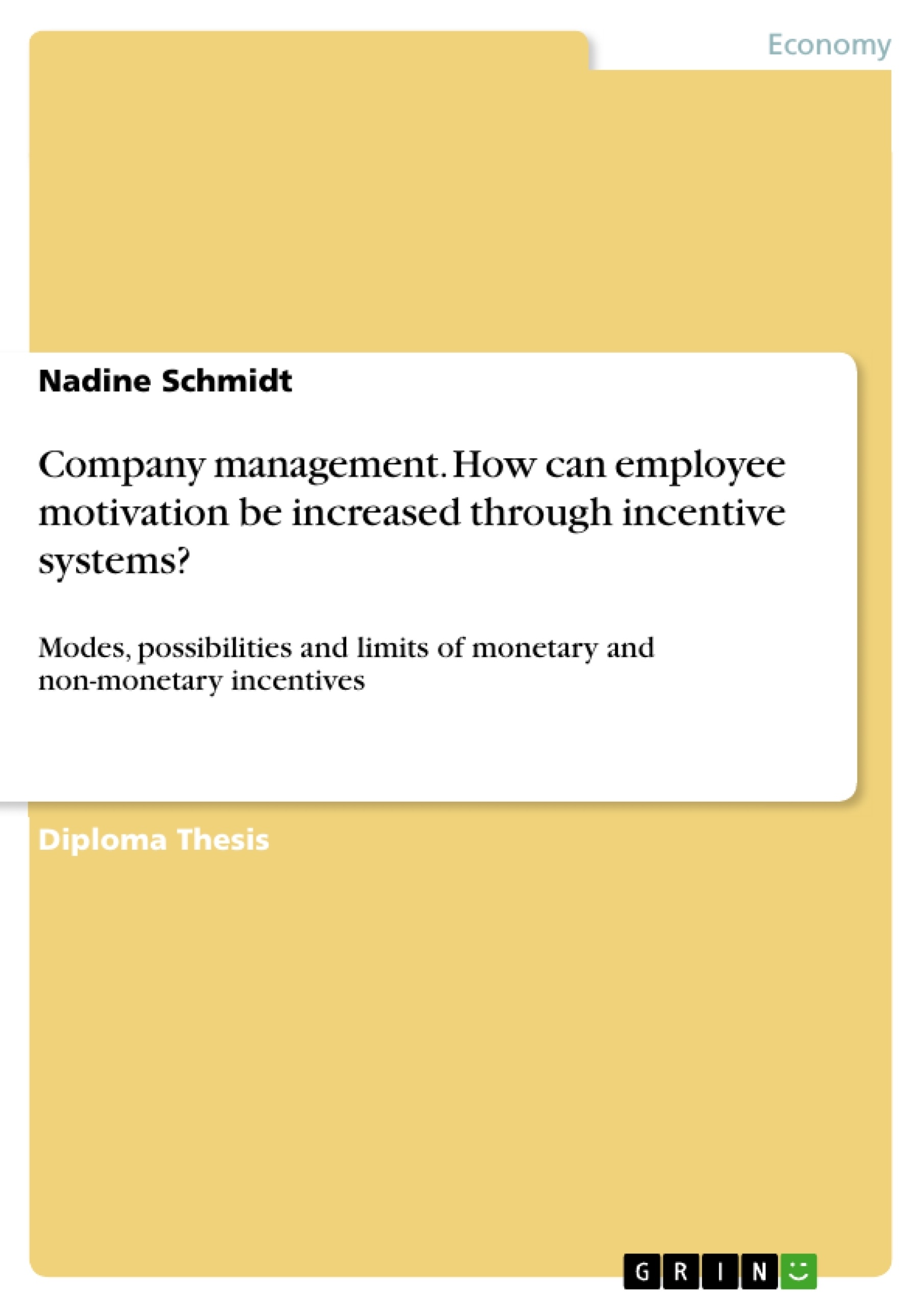The motivation of employees is an important task of today's corporate management. In order for managers to do justice to their tasks and encourage employees to perform at their best, they must know how to influence the attitude and motivation of their employees in a positive and performance-enhancing way.
Since each employee pursues different goals and the company's goals must not be neglected, managers must develop a flexible incentive system in order to reconcile the goals of the employees and the company's management. But how exactly does an incentive system have to be designed in order to be able to motivate employees?
In this book, the author takes a critical look at increasing employee motivation using incentive systems. To this end, he compares basic motivation theories by Maslow, Herzberg and Vroom, among others, and illustrates the benefits for today's personnel policy. The author also shows how incentive systems work. In doing so, he makes it clear where the possibilities and limits of monetary and non-monetary incentives lie in relation to the willingness to perform of a company's employees.
From the content:
- Motivation theory;
- Attraction;
- Extrinsic motivation;
- Intrinsic motivation;
- Monetary incentive schemes;
- Non-monetary incentive systems
Inhaltsverzeichnis (Table of Contents)
- 1 Introduction
- 1.1 Problem statement
- 1.2 Objective
- 1.3 Course of work
- 2 Basic concepts of motivation theory
- 2.1 Goals
- 2.2 Motives
- 2.3 Incentives
- 2.4 Interaction of goals, motives and incentives
- 3 Motivation theories
- 3.1 Content theories
- 3.2 Process Theories
- 4 Incentive systems for the motivation of employees
- 4.1 Monetary incentive systems
- 4.2 Non-monetary incentive schemes
- 5 Possibilities and limits of employee motivation through incentive systems
- 5.1 Monetary incentive systems
- 5.2 Non-monetary incentive schemes
- 6 Conclusion / Outlook
Zielsetzung und Themenschwerpunkte (Objectives and Key Themes)
This paper aims to critically examine the increase in employee motivation through the use of incentive systems. It aims to compare basic motivation theories and highlight their relevance to today’s personnel policies. The paper will also analyze the effects of incentive systems to highlight the possibilities and limits of monetary and non-monetary incentives in motivating employees. The findings will be used to answer the question of how an incentive system should be designed to motivate employees.- Employee motivation in the context of corporate management
- Analysis of different motivation theories
- Application of monetary and non-monetary incentive systems
- Evaluation of the effectiveness and limitations of incentive systems
- Development of a framework for designing effective incentive systems
Zusammenfassung der Kapitel (Chapter Summaries)
- Chapter 1 introduces the problem statement, which focuses on the importance of employee motivation in today’s corporate management. It highlights the need for effective incentive systems to influence employee behavior and promote optimal performance.
- Chapter 2 delves into the fundamental concepts of motivation theory, including goals, motives, incentives, and their interaction. This chapter provides a theoretical foundation for understanding employee motivation.
- Chapter 3 examines various motivation theories, classifying them into content and process theories. It explores how these theories can contribute to employee motivation and provides a framework for understanding different motivational factors.
- Chapter 4 discusses incentive systems and their functioning, specifically focusing on monetary and non-monetary incentives. It explores the different types of incentives and their potential impact on employee motivation.
- Chapter 5 analyzes the possibilities and limits of employee motivation through incentive systems. It examines the relationship between various motivation theories and the use of monetary and non-monetary incentives.
Schlüsselwörter (Keywords)
The main keywords and focus topics of this paper are employee motivation, incentive systems, motivational theories, monetary incentives, non-monetary incentives, corporate management, personnel policy, and effectiveness limitations. The work explores the theoretical foundations of employee motivation and examines the practical application of incentive systems in today’s business environment.- Quote paper
- Nadine Schmidt (Author), 2017, Company management. How can employee motivation be increased through incentive systems?, Munich, GRIN Verlag, https://www.grin.com/document/1181385



